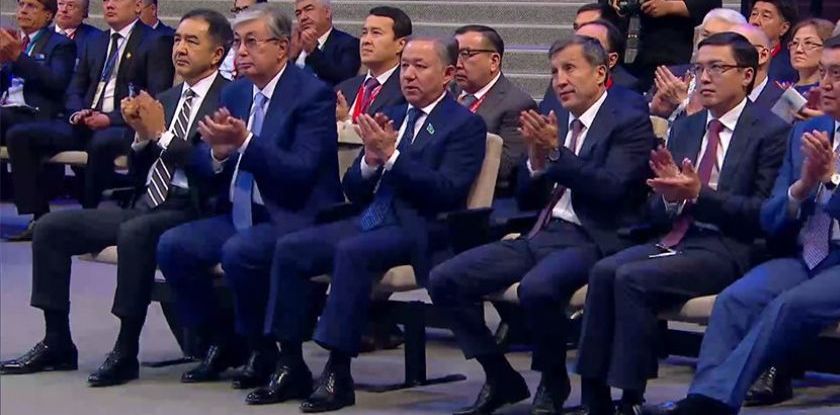How can Kazakhstan become Norway, without following in the steps of Emirates? The answer to this complicated question was attempted by speakers of the economic forum that took place this June in Astana, within the framework of pannel section “The trap of medium income: challenges for Kazakshtan”. We offer our readers the most interesting in our opinion, fragments of speeches of participants of this discussion.
Let’s start by defining what exactly is the “trap of medium income”. According to expert estimates the talk is of slowing down and even halting of the growth of economy, upon achieving medium level of income of population. The danger of this phenomenon is in that, developing countries lose the ability to compete with both developed economies with high qualification and innovations, as well as with economies with low income, low salaries and cheap production of goods.
Did Kazakhstan fall into this trap? None of the participants of the discussion could affirmatively answer this question, but all of them noted, that there is such a risk, and thus steps must be taken in order to avoid or at least minimize it.

Marathon runners win
First to present was John Panzer- World bank’s director of global practices o macroeconomics and fiscal management, who directly said “What has led you to where you are now, most likely won’t lead you to where you want to be. For countries such as Kazakhstan, a path to the level of income of 38-39 USD per capita, is a long one, during which a lot of work has to be done. It demands a lot of adaptiveness and focus on the growth of production and innovation”.
In his opinion, long-term growth doesn’t happen by chance, “It is a result of government policy, cooperative work of state bodies with entrepreneurs and private sector”. And this work, he says, requires four directions.
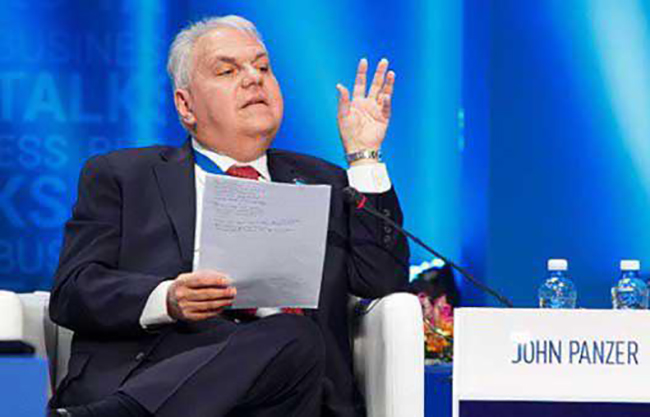
First, is macroeconomic research. “It is impossible to control for inflation, crises, work out sustainability to volatility of prices, without it. We see countries, that should’ve had gotten rich fifty years ago, but if you look at their macro-economics, you will see that every decade the face a crisis. A long-term growth is impossible in such an atmosphere”.
Second is the presence of powerful institutions and authority of laws, which are very important for a long-term growth, as well as quality of government administration, which supposes control over corruption and effective leadership. “Not a single country has achieved long-term growth without it”.
Third is investments into education and human capital. “The degree of advancement of productivity and technical innovations to a large extent depend on percent correlation of high-quality human capital”.
And finally the fourth direction, in the opinion of representative of the World bank, is “open competitive markets, which could support effective distribution of resources and provide adaptability, aspiration to improve and increase effectiveness, receive and distribute knowledge and innovations”.
“Achieving high level of income requires time and work. There are no quick recipes here it isn’t a marathon but rather a sprint” – John Panzer summarized.
In search of growth factors
“The trap of medium income” is closely related to a wider concept of economic growth and competitiveness of the country in general, in his turn thinks the head of the department of government control and organizational-territorial work of the administration of president of RK, Maksat Mukhanov. He reminded that Kazakhstan has a goal of getting into the lost of top-30 most developed countries of the world by 2050; thus the theme of “theory of the trap of medium income is quite a timely subject”, however since “there are no universal approaches, solutions, and ready recipes in the world”, “every country choses its own strategies of economic growth and way to get out of the medium income trap, based on its ambitions and features”. I.e.” sequence and forms of implementation of the growth strategy depend on the country”.

Positions and approaches of Kazakhstan, related to this phenomenon, in his opinion, have found a reflection in strategic documents, including on entering the top-thirty of developed countries. “On the initial stage, our country has taken the model of growth, related to use of existing competitive advantages at the time period: natural resources, convenient geography close to growing markets and relatively developed labor resources. Kazakhstan has tried to transform these advantages into economic growth, development of processing industries, diversification of economy, development of human capital as well as development of infrastructure”
As a result, already by 2006, Kazakhstan was, based on parameters of the World bank, a country with a higher-than average level of income”. Efforts didn’t go in vain and “minimized consequences of crisis, allowed to create some financial backup, in order to painlessly go through those transformational periods”.
Nonetheless, today, in official’s words, in order to provide “an entry to a new level of development, there needs to be a radical transformation of economic policy. Due to this, this year, as you know, in the message of the head of the state a new model of growth was proposed. A formula of this growth – is a growth based on modernization plus reforms. And a second document that is important for the country is a “100 steps” plan of the nation, within which a pool of institution reforms was proposed, which is necessary for quality modernization. From extensive measures, we have to switch to intensive factors of growth”.
Further, Mukhanov talked of the five basic characteristics of Kazakhstani model, that are supposed to help escape the “medium income trap”.
- Economic growth based on expansive exports.
“Presently the government is developing such export strategy. And it isn’t an export of raw materials sector. Exports don’t necessarily have to be include manufactured goods, it also includes many services. As of today around 70% of economically-active population is involved in services sector. Of course as of today, these aren’t tradable sectors of service. In the future, these sectors have quite a big export potential. That is education, financial services, healthcare, tourism. In Kazakhstan today, the structure of labor resources approximately corresponds to the structure of developed nations. But at the same time, in terms of quality characteristics there needs to be further work done, which is accomplished as part of program documents of the government”, – this is how Mr. Mukhanoiv described first base characteristic
- Modern institutes, quality professional management, government apparatus, based on principles of meritocracy, accountability, as well as supremacy of law. Plus human capital
Thus many countries that do not have rich natural resources and are deprived of other advantages, made a bet on human capital. Today the fight for talents, best employees, have taken mass proportions in the world – reminded representative of presidential administration, having said that, due to this Kazakhstan has made an emphasis on development of labor resources”.
“Today analysis shows that our labor resources are mostly concentrated in less productive sectors, but the latest trend shows that from 2010, virtually 40% of those employed in agriculture have switched to other sectors. Thus, it is a kind of policy of transformation of movement from lower productivity to higher ones. It can have a positive effect on cumulative factor productivity in Kazakhstan” – Mukhanov thinks.
- A developed private sector
“In Kazakhstan around 80% of GDP is produced in private sector. At the same time large conglomerates remain, which belong to the state and thus, currently efforts are made to lower government participation in the economy through privatization”, – official said.
- Territorial modernization
“Today big waves of population from rural areas are moving into cities. This factor is very important for the growth of productivity of labor and development of competitiveness. Here, measures are being taken to, in order to create modern city environment, large agglomerations, which will become a factor attracting labor resources and transforming them into more productive sectors of economy”, – that is how Mukhanov ended his speech.
Salvation is in loans to small and mid-size businesses
Akim of Kyzilorda oblast Krymbek Kusherbaev had a courage to admit that Kazakhstan virtually ended up in the trap of medium income twice.

“Statistics show that a considerable rise in oil prices and economic reforms of the early 2000s led to a growth of Kazakh economy and quick rise in standards of living. In 2007 average per capita GDP of Kazakhstan has exceeded 19 thousand dollars. However, in 2008-09 economy of Kazakhstan has suffered strongly from world economic crisis. In 2009, as you remember we, for the first time ended up in this zone, when the economy showed a mere growth of 1.2%. In 2008 the growth was 3.4%. After the crisis, economy quickly started to grow again. In 2011, the growth was 7.5%, however, in the coming years the growth has slowed down and in 2016 it went down to 1% – Kusherbaev reminded.
He continued: “And in the conditions when the per capita GDP is 16 thousand USD and higher, in the opinion of specialists, the country loses its competitive advantages, i.e. expensive labor force scares away investments and the country starts to lose in the competitive fight to other developing countries. Moreover, it becomes more profitable for a country to procure ready goods abroad, rather than produce them domestically, due to strong currency. Thus, a process of deindustrialization starts. At the same time, the country cannot compete with developed countries, because it hasn’t yet achieved success in releasing high-tech products. As a result we start tugging and falling into recession. As a result, a growth of unemployment is possible, as well as weakening of national currency and growth of inflation”.
However, speaker doesn’t lose optimism. “Since the beginning of this year we are feeling positive trends, growth of economy, I read online that in five months we had a GDP growth of 4.1%. But of course we cannot talk of complete recovery.
In Kusherbaev’s opinion, in order to go through this trap, we need to utilize refinancing of commercial bank by National bank more.
“Allocation of special credit line for support of small and mid-size enterprises and funding of developmental bodies would give an oportunity to start a growth of growth domestic product through directed lending of investment projects, modernization and loading up of existing industrial capacities, over third of which today are idle only due to absence of floating assets. In the situation of absence of access to loans and inability to realize those careers in which people are used to work in, there is a rising social pressure. Inaccessible bank loans do not facilitate the growth of GDP. Interest is a tax on innovations. Monetization of economy, in other words, its with money, in the present, isn’t enough. There needs to be a flow of long term and cheap money into the economy. An increase in monetary stock must lead to a growth in economy” – akim thinks.
In his words the “level of financing in Kazakhstan today is 40% and in China it is 255%”. “Of course we are not talking about mindless injecting of funds and dispersal of inflation. It has to be a targeted inflow. A growth of money stock must be used not for salary payments to budget workers or pension growth, but for real investment project, which provide growth to commodities mass and considerable growth pf GDP. Targeted emission won’t blow up inflation and won’t let those funds go to consumer market.”
As an example akim talked of the work done as part of Nurly Jol program, where “connected emission doesn’t scatter inflation”. In his opinion, “worries that we might get out of the set inflation corridor, which will interfere with implementing of policy of inflation targeting, aren’t convincing”. “I am sure that for stimulating of economy there is a necessity for transfer from restrictive monetary-loan poicy meaning drying out of monetary stock exclusively for purposes of targeting, to a policy of stimulation, fighting inflation through economic growth by the way of gradual increase of monetization level of economy for concrete projects” – Kusherbaev announced.
As an example, speaker have given an experience of a slew of countries, including South Korean, which was able to escape the “trap of medium income” in large part by creating good opportunities for conducting of business, not related to large corporations, as well as of Germany and especially Poland, which passed a special law on micro-business.
Speaker is convinced: “In order to incrase effectiveness of measures aimed at getting out of the zone of the trap of medium income, there needs to be increasing of government support in all directions, facilitating development of business-environment, acceleration of enterprise registration, receiving of building permit, protection of investors, easy access to loans. And of course, no less important is technological advancement. We understand that this isn’t an issue of two or three decades. There needs to be a super-competitive environment, since the world is changing with a speed of light. The decision making speed now plays a crucial role. Thus, technological breakthrough will happen when such managerial system will be formed that allows for implementing of initiative and idea at high speeds”.
Corruption and bureaucracy prevent growth
After speeches of main presenters a discussion followed which showed that concept of “medium income trap” is quite multifaceted.
For instance, senior partner of the Center for strategic initiatives Oljas Hudaibergenov thinks, that a subject of the trap isn’t timely for the countries that have a low level of corruption and high-level of government apparatus, and on the contrary is timely for countries that have these issues.
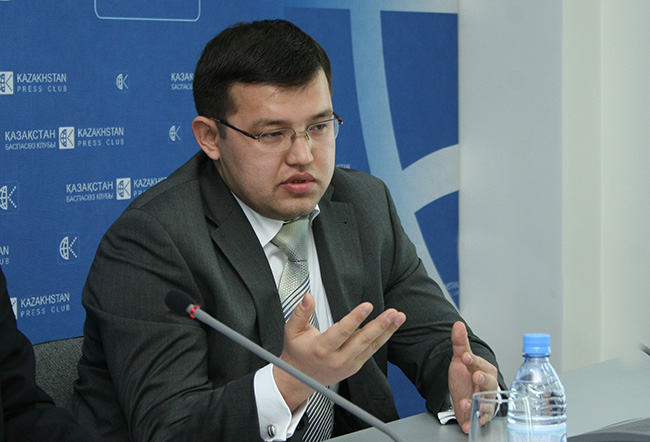
“Recently we conducted a survey among enterprises and when discussing with them results if these surveys, following has come to light. Companies that produce commodities have a prime cost, that needs to be lowered in order to be competitive at foreign markets. But companies have a large share of expenses, which, let’s say, don’t have a relation to direct prime cost, but affect its size directly and not. This is corruption” – expert said directly.
He says that in Kazakhstan volume of government procurement is around 13-15 trillion tenge. “Naturally, corruption, if it affect this entire sum, surely falls on enterprise’s expenses. Also, it isn’t just government purchases. There is also commercial corruption. I.e. majority of large companies during procurement have the same problem, when the company seems private, but in reality the procurement department works in the way that isn’t much different by its procedure from government sector”.
“Also there are company expenses that are related to ineffectiveness of the system of education. At the level of high education we have problems. 90% of university graduate work outside of their major area. For an employer this means that he is forced to spend money on increasing qualification of such an employee, in order for him to more adequately conform to his position” – said Khudaibergenov, noting that while such worker is learning, including on his mistakes, these mistakes fall as an additional burden on the company.
“There are company expenses related to bureaucracy, starting from problems related to return of goods tax and ending with often futile efforts to receive any preferences on investment contracts” – expert noted and gave following example: “It was said that government will return 30% from the cost of investments, put into resources. It looks like this measure exists on paper, but in reality nobody has used it, because procedure is prolonged or there is no money in the budget. So this is how it turns out: entrepreneur makes a request and waits for it to be approved by officials – formally this a month, but on practice this prolongs for many months. As a result a year passes and the preference becomes useless”.
Also, the business has expenses, related to “ineffective social policy”. As an example Khudaibergenov brought the state of affairs in retail business: “There is a standard world practice, that in the retail business volume of shortfall is around 2%. But in Kazakhstan it is higher, somewhere around 5-7%. Aside from reimbursement of these losses, business is forced to essentially create additional social instruments within the company. At the level of large companies, transnational ones – it is a welfare package and so on. At the level of small and mid-size business – it is more often a one time help in paying for apartment, education, etc.”
By his calculations, expenses that are not related to production activity, make up a sum “of around 30-40%” of company’s budget”. He thinks that if you erase these problems, a businessman can compete”.
Attention to quality of life
In his turn, president of the Center of social and economic research from Warsaw Christopher Hartwell is concerned by such “focus on the medium income trap” because it a very narrow view on the problem.
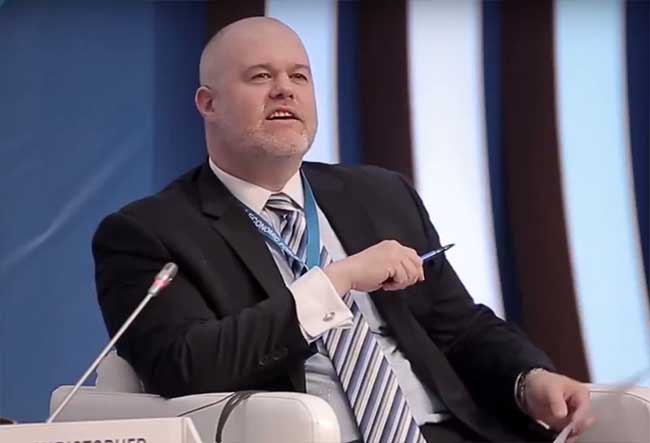
“We need to have a wider view of what is happening with economic growth, of what is a component of business environment. There is no elixir of growth, which could be drank to overcome problems of medium income. If look at what literature says about the medium income trap, what could be “doctor’s” recommendations? Infrastructure – we already know infrastructure is important. And better government institutions. And investments in innovations and technology. We know that there needs to be modernization of human capital and needs to be investment into education” Hartwell explained, noting that modern education system hasn’t gone far from the system of XIX century, “when publica education, administered by the state is built around agricultural calendar.
Thus, in his words, these are all know recipes. However, among the reasons for why countries are stuck in the trap of medium incomes, two main ones can be outlined.
- Failure of macroeconomic stabilization policy.
“We think than we have stabilized everything well and will start moving. But maybe we need more government investment, more monetary injections? But thus again returns us to destabilization of economy. I would even say, that 85% of getting into the trap of medium-income can be explained by neglect of this fundamental concepts”.
- Deeper structural shortcomings
“There need to be different growth strategies on different levels of development, I.e. what led you to your current state, won’t lead you to where you need to be tomorrow. Thus, we start second generation reforms. Macroeconomic stability is a given, and nothing new is offered by 2nd generation reforms.
“Right now we are narrowly focused on separate issues – Hartwell noted in conclusion. We don’t need to focus on some medium income. No, we need to look at the quality of life of population, and these aren’t just some numbers and not just a GDP, these are social moments, ecological moments, how the society feels overall”.
To Norway through Emirates
Manager of the international financial center Astana Kairat Kelimbetov in his short speech noted that today’s economic state within the country and around it “speaks of the fact that it is time for real reforms”.
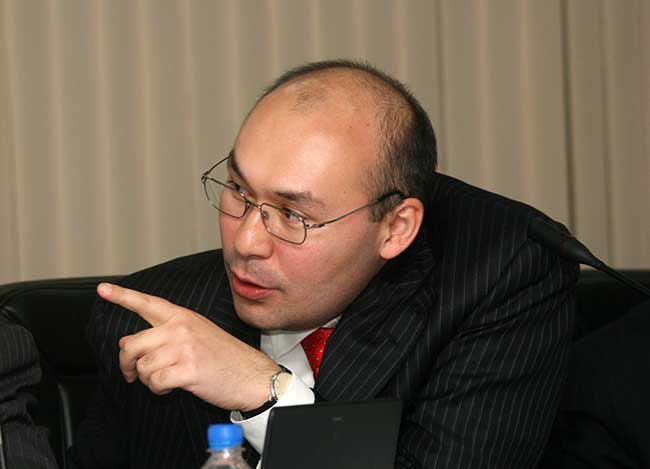
“I think that the moment of latest changes in the world has become a sort of a wake-up call for us, when federal government, business community and the public overall in Kazakhstan realized that there needs to be a transfer to a new level” – said Kairat Kelimbetov.
This is why, in his words, several modernizations were announced at the same time. “This is both political modernization and modernization of public mind, a technologic modernization, because we see that big changes of the paradigm of development are happening in the world right now. For Kazakhstan (necessity of modernization) is partially related to the problem of the medium income trap. But even more so, in my opinion, this is related to an issue that we call an oil curse or Dutch disease, since high inсome from oil beget a certain parasitism, and business today is more focused on looking for revenue rather than searching for development of innovative technologies or changing of the business model.”
Kelimbetov has reacted to Kusherbaev’s proposal to change the lending policy in the following way: “In the sphere of economic discussions some remedies are often proposed – such as changing fiscal policy and ending up in the “fairytale” or monetary policy, or.. But I think that we went through that period, and had certain reforms done to fiscal policy. We remember the reform of 2008-09, when a big lowering of the tax burden has taken place, and there was no increase in the tax base, as a result a structural deficit of the budget was created. Or, for instance, transfer to inflation targeting and devaluation of national currency also seemed like a magic pill. But we see, that as of today, no magical changes happened, even though it was necessary”.
Further on, he talked of how they are trying to turn IFCA into a business oasis. “Today we are a pilot project for the government. Using the norms of English law through creation of independent arbitrage, i.e. by building ideal court system within financial matters, by building capital market through consistent privatization, and through creation of effective institutes we will create an oasis for Kazakhstani business, from which the right DNA-matrix may be created for regulators, institutes and business communities”.
But since, in Kelimbetov’s words public is always eventually demands a concret formula of “where are we headed, who are we looking up to”, he decided to add: “In my opinion, among oil-rich country, such country is Norway, which despite certain problems was able to create such public institutes that allow the country to be competitive. On the other hand, Norway is in a slightly different geo-political landscape. This country is in essence a part of European community. Thus, I think that foe us this transition is as follows: to Norway through Emirates. It is Emirates that today demonstrate the ability to bring the best practices and new institutions, which allows the, to be the country with a truly diversified economy, oriented at the highest world standards”.
A fly in the ointment
Continuing the subject, the chairman of the board of directors of AO VISOR Holding Aydan Karibjanov proposed to “go back to Soviet times.
“By and large, Soviet Union collapsed because of the trap of medium income, because Soviet system was built in the way, in which it needed some strong drivers, such as revolution, war, collectivization, atomic bomb. And when the oil prices fell in the 80s there were no such drivers. Baykal-Amur highway clearly wasn’t enough for this. After this, nineties came with a drastic collapse throughout the entire post-Soviet space, then there was a growth of 2000s. And largely, high rates, that we had in the 00s are explained by both oil prices and low start, i.e. deep fall that happened earlier” – Karibjanov thinks.

In his opinion, “trap in itself is bad”, but “medium income is good”, because from the viewpoint of an entrepreneur “many kinds of business are possible to be done only in the country with a medium income”. Thus, McDonalds appears not because somewhere a movie theater was demolished, but because income in the country has reached a level where it is feasible to open a McDonalds. Business always looks for a deeper place, and the problem of stagnation, lack of growth, leads to geographic migration. It has always been this way. Christopher Columbus himself has left to search for India, because there was a certain stagnation where he lived. He was looking for new horizons. In the same way business can “float away” to neighboring countries, but not to those where he might face same problems, but to countries with different drivers of growth. Thus business is trying to fight this trap and lack of growth in its own way” – Karibjanov is convinced.
This is probably why he assumes that China’s “fall” into medium income trap is a positive thing for Kazakhstan. We looked uncompetitive with regards to China for many years. But I allow for the fact that in a few years, out neighbors will end up in a difficult situation, or they already did end up there, and this will open up certain opportunities for us in terms of production”. Karibjanov summarized with “much was said today about government efforts on bettering of investment climate, fighting corruption etc. But I think the main critique of the government is about not falling out of overall program”.
To be continued

